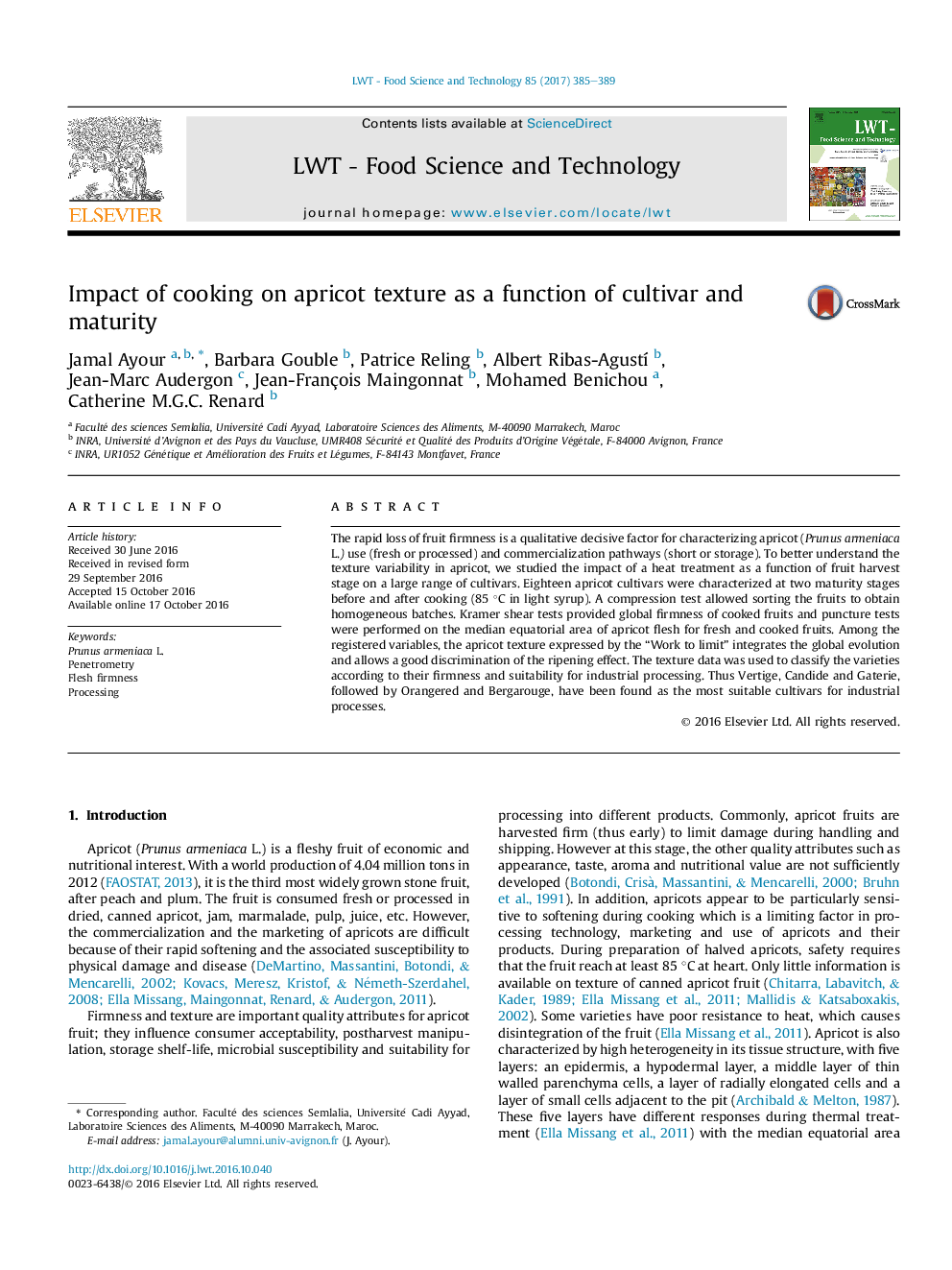| کد مقاله | کد نشریه | سال انتشار | مقاله انگلیسی | نسخه تمام متن |
|---|---|---|---|---|
| 5768393 | 1413222 | 2017 | 5 صفحه PDF | دانلود رایگان |
- Texture loss between fresh and cooked fruit depends on variety and maturity stage.
- Flesh median area is the relevant zone to select varieties for processing.
- Tested cultivars present different degrees of susceptibility to heat treatment.
- Vertige, Gaterie and Candide are the best cultivars for industrial process.
The rapid loss of fruit firmness is a qualitative decisive factor for characterizing apricot (Prunus armeniaca L.) use (fresh or processed) and commercialization pathways (short or storage). To better understand the texture variability in apricot, we studied the impact of a heat treatment as a function of fruit harvest stage on a large range of cultivars. Eighteen apricot cultivars were characterized at two maturity stages before and after cooking (85 °C in light syrup). A compression test allowed sorting the fruits to obtain homogeneous batches. Kramer shear tests provided global firmness of cooked fruits and puncture tests were performed on the median equatorial area of apricot flesh for fresh and cooked fruits. Among the registered variables, the apricot texture expressed by the “Work to limit” integrates the global evolution and allows a good discrimination of the ripening effect. The texture data was used to classify the varieties according to their firmness and suitability for industrial processing. Thus Vertige, Candide and Gaterie, followed by Orangered and Bergarouge, have been found as the most suitable cultivars for industrial processes.
Journal: LWT - Food Science and Technology - Volume 85, Part B, November 2017, Pages 385-389
